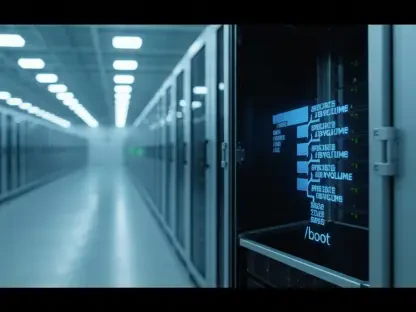In today’s digital age, where enterprises heavily rely on online platforms and data-driven processes, the significance of cybersecurity has reached unprecedented levels. As cyber adversaries grow more sophisticated, organizations face the imperative task of continuously upgrading their defense mechanisms to safeguard their assets. This article delves into the complex strategies essential for countering these dynamic threats, thereby ensuring enduring digital resilience and security.
Understanding the Modern Threat Landscape
Comprehending the complexities of current cyber threats is paramount in devising effective defense strategies. Cyber attackers have evolved beyond traditional methods, now favoring tactics such as supply-chain attacks. This approach targets third-party vendors and service providers, circumventing direct security measures and resulting in substantial breaches. These indirect attack vectors contribute significantly to the global tally of cybersecurity incidents, highlighting the need for heightened vigilance.
Advancements in technology, particularly the widespread adoption of Internet of Things (IoT) devices, have further intensified the challenges facing cybersecurity infrastructure. The sheer volume of interconnected devices amplifies potential points of vulnerability, making systems susceptible to breaches on an unprecedented scale. As IoT endpoints proliferate, the focus on robust security frameworks becomes even more critical. Organizations must adopt comprehensive strategies to mitigate risks posed by these new vulnerabilities and ensure the protection of their digital ecosystems.
Building a Foundation of Strong Security Protocols
Establishing a robust foundation of security protocols is fundamental to thwarting ever-evolving cyber threats that organizations face. Implementing cutting-edge web-based security measures is the linchpin of this defense strategy. A noteworthy initiative involves utilizing the latest versions of Transport Layer Security (TLS), with TLS 1.3 offering notable improvements over its predecessors. Enhanced features such as reduced handshake times and the removal of obsolete cryptographic algorithms contribute to superior data protection.
Beyond TLS enhancements, employing web application firewalls (WAFs) is vital in defending against prevalent cyberattacks such as SQL injections and cross-site scripting. These security layers serve as formidable deterrents to malicious actors. Additionally, network segmentation emerges as an indispensable technique in containing security breaches. By isolating critical systems, organizations can minimize potential damage from breaches, curtailing lateral movement and protecting sensitive data. This layered defense approach strengthens organizational resilience against external threats.
Embracing a Layered Security Approach
A coherent and multi-layered security approach, often termed defense in depth, is an indispensable strategy for contemporary organizations. This involves deploying several defensive layers ranging from endpoint protection mechanisms to robust perimeter defenses. Deploying firewalls to manage the flow of traffic is a vital component of this strategy, contributing to the mitigation of unauthorized access attempts.
Integral to achieving a holistic defense model is the implementation of Identity and Access Management (IAM) tools. IAM solutions are crucial in regulating user access and ensuring that only authorized individuals have the necessary permissions to sensitive areas. Implementing multi-factor authentication (MFA) within IAM systems further enhances security measures, reducing the risk of compromised credentials. These diversified layers of defense combine to create a formidable security posture capable of addressing the intricate challenges associated with modern cyber threats.
Leveraging Artificial Intelligence and Automation
Incorporating Artificial Intelligence (AI) and automation into cybersecurity frameworks is a game changer in the battle against cyber threats. AI technologies possess the capability to swiftly identify and mitigate threats, surpassing traditional manual monitoring systems in speed and efficiency. By leveraging machine learning algorithms, AI-driven solutions can autonomously detect patterns and anomalies that signal potential attacks, enabling rapid response efforts.
Integrating automation into cybersecurity not only accelerates response times but also enhances endpoint security by automating incident detection and response protocols. Automated systems can swiftly isolate and neutralize threats, such as ransomware attacks, effectively curbing their potential impact before they can spread. The synergy between AI and automation enhances the overall security posture of organizations, reinforcing their ability to stay ahead of increasingly sophisticated cyber adversaries.
Prioritizing Continuous Monitoring and Evaluation
In the current digital landscape, where businesses extensively depend on online platforms and data-driven processes, cybersecurity’s importance has amplified to unprecedented levels. This era witnesses cybercriminals getting increasingly sophisticated, posing significant challenges for organizations. To protect their valuable information and systems, businesses must continuously enhance their cybersecurity measures. This involves adopting robust strategies that address the ever-evolving threat landscape. As these threats become more dynamic, organizations are tasked with ensuring their digital infrastructure remains resilient and secure. Protecting digital assets is no longer optional; it’s a necessity. As cybersecurity threats grow, being proactive in defense measures isn’t merely recommended; it’s imperative. This article explores the intricate strategies necessary for combating these threats, guaranteeing the ongoing resilience and security of digital operations. Maintaining a strong digital defense posture could mean the difference between thriving in the digital world and facing potential crises.









